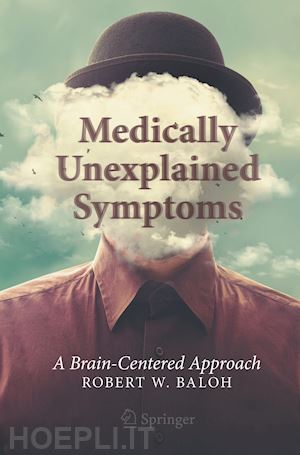
SPEDIZIONE GRATIS
con corriere veloce per acquisti oltre 29,00 €.
Pagabile anche con Carta della cultura giovani e del merito, 18App Bonus Cultura e Carta del Docente
Despite the rapid advances in medical science, the majority of people who visit a doctor have medically unexplained symptoms (MUS), symptoms that remain a mystery despite extensive diagnostic studies. The most common MUS are back pain, abdominal pain, headache, fatigue, and dizziness. This book addresses the obstacles of managing people with MUS in our modern day society from both a historical and contemporary perspective.
Most MUS are psychosomatic in origin, caused by a complex interaction between nature and nurture, between biological and psychosocial factors. Psychosomatic symptoms are as real and as severe as the symptoms associated with structural damage to the brain. Unique and concise, the book explores the biological and psychosocial mechanisms, the clinical features, and current and future treatments of common MUS.
Exploring the unsolved in an accessible manner, Medically Unexplained Symptoms invokes the methodologies of medical science, history, and sociology to investigate how brain flaws can lead to debilitating symptoms.
Introduction
Chapter 1. Overview of Medically Unexplained Symptoms
Pain
Brain flaws
Fear
Anxiety
Dizziness
Stress
Fatigue
Diagnostic uncertainty
Chapter 2. Early ideas on hysteria
Hysteria and female sexuality
Bizarre behaviors
Hysteria and the occult
Nerves
Hysteria, a nervous disorder
Early treatments of hysteria
Spinal irritation and the spinal reflex theory
The attack on the female genitalia
Hysteria and fasting girls
Chapter 3. The Golden age of Hysteria
Briquet’s syndrome
Charcot and his hysterical circus
Hysteria and hypnosis
Borderlands of hypnosis
Nature or nurture
Ideas about hysteria evolve
Neurasthenia and neurosis
AmericanitisS Weir Mitchell and the Civil War
The Rest Cure
S Weir Mitchell, the enigma
Nerve doctors
Evolution and the brain
Chapter 4. Psychosomatic illness in the 20th Century
Freud, the early years
Breuer’s famous patient, Bertha Pappenheim
Freud and Breuer’s book on hysteria
Suppressed memories and childhood sexuality
Freud’s model of the mind
Overall impact of psychoanalysis
Physicians, patients and psychosomatic symptoms
Common sense psychotherapy
Alternate medical treatments and suggestibility
War and Psychogenic Illness
PTSD the prototypical delayed stress disorder
Relationship between PTSD and mild traumatic brain injury (mTBI)
Psychosomatic medicine
Chapter 5. Biological mechanisms of Psychosomatic Symptoms
The biological link between stress and illness
The hypothalamic-sympathetic-adrenal axis
The brain’s emotional center, the limbic system
The hypothalamic-pituitary-adrenal axis
Pavlov and neural plasticity
Hebb’s Synapse
Molecular mechanisms of brain plasticity
Stress and the limbic system
Nerve growth factors and stress
The amygdala-prefrontal cortex connection
Central sensitization, a model of neuroplasticity
The descending pain modulatory system (DPMS)
Robert W. Baloh MD
Distinguished Professor of Neurology
David Geffen School of Medicine at UCLA
Los Angeles, CA











Il sito utilizza cookie ed altri strumenti di tracciamento che raccolgono informazioni dal dispositivo dell’utente. Oltre ai cookie tecnici ed analitici aggregati, strettamente necessari per il funzionamento di questo sito web, previo consenso dell’utente possono essere installati cookie di profilazione e marketing e cookie dei social media. Cliccando su “Accetto tutti i cookie” saranno attivate tutte le categorie di cookie. Per accettare solo deterninate categorie di cookie, cliccare invece su “Impostazioni cookie”. Chiudendo il banner o continuando a navigare saranno installati solo cookie tecnici. Per maggiori dettagli, consultare la Cookie Policy.